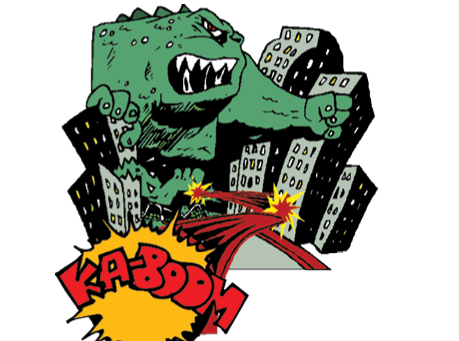
Show me your story
May 19, 2016
Meet the press
May 19, 2016Motion your story
Learn about effective communication methods using visual storytelling and stop-motion technique.
Learning objectives and the skills developed
To use a stop motion technique to create a
simple two-dimensional and/or three-dimensional animation that communicates an idea.
To learn an alternative visualization method.
To learn planning of a multimedia production.
When to use it?
In visual storytelling, effective communication methods.
Materials:
Flipchart, color pencils, news articles or reports, projector.
Preparation:
Read the info box about stop motion animation technique and essentials.
Find interesting examples of stop-motion movies (some example links were provided in the resource section).
Presentation:
Explain what stop-motion animation is and 2D and 3-D techniques and materials to use in an animation.
Show different examples of stop motion animation. Some videos from “Making Of” documentaries that can also be a great way to begin discussing the techniques and strategies used in stop motion.
Have participants come up with 15 second promotional video on anything and have them discuss, brainstorm, and write everything down. Challenge students in suggesting new ideas and adding to existing ideas. Even weak ideas can be developed into something good! 30 minutes
Remind students that great ideas can come from simple, every day experiences.
Have students take notes and write down their thoughts on the plot, the scenes, the characters, and any extra details that come to mind while they are writing. Use the linked handout to get them started!
KEEP IT SIMPLE! The shortest and simplest concepts are the easiest to animate. Limit them to one or two characters, so that they can concentrate on the details.
The approach students take (2-D, 3-D or combined) should support their overall idea.
A script is the written description of the actions that will take place. Ask students questions according to their age such as:
What is your theme or idea?
What sort of personality would you like to create?
How long do you plan for this to be? How many frames and fps is that? (Make them do the math!)
Who in your group will do which production jobs?
What materials or objects will you need to collect?
What kind of background will you need?
Will 2D or 3D technique work better for this particular story? Why?
What different shots do you need? What close-ups?
Attach your storyboard! Have you varied the scale, pace, angle or whatever of the shots?
What else do you want to say about your idea?
The story then is ready to be visually depicted as a storyboard outlining the plot, characters, and backgrounds. Remind students that storyboarding and planning on paper saves time and energy because they will figure out all the details before committing to the animation. Storyboarding will also ensure that each group selects the one approach best suited to the basic concept they’ve identified. Using poster board, preferably large, and a packet of post-it-notes, sort out the ideas and images to be used. Divide up the page, discuss the sequence of shots, and draw in key transitions or moments, making notes as necessary. Label each section of the storyboard with sequence, camera angle, timing, and other directorial information as you go.
Once groups have decided on the story they will be telling and have created their storyboards, they need to begin gathering their props, characters, and back drops to be ready to film their animation. Ask them to use the materials you and they bring in the workshop.
Show them how they place and use their mobile devices by following the guideline in the info box.
Tell them to download and open the stopmotion studio app and show them how they will use it.
Ask students to start filming according to their plan.
Ask them to save the final product and upload it to youtube to share with other participants
Follow up questions:
How well are the groups working together?
How well are group members communicating? To what extent is each group member contributing to the project?
Possible Variations:
The workshop can be divided into two to three parts in case of limited time.
| Preparation | 30 mins |
|---|---|
| Duration | 2-3 hours |
| Group size | Unlimited |
| Age | Any |
You must be logged in to post a review.
Related products
-
Social media marketing
Learning objectives and the skills developed To learn about storytelling To understand the importance of visualization in presentation To learn about online visualization tools To learn […]
-
Visual timeline
Learn about reflective planning through visual storytelling and understand the importance of visualization in presentation.
-
Retell the story with pictures
Learning about visual storytelling and presentation using online visualization tools.





Reviews
There are no reviews yet.